First Clinical Report of Two RAB3GAP1 Pathogenic Variant in Warburg Micro Syndrome
- PMID: 37575647
- PMCID: PMC10421685
- DOI: 10.1055/s-0043-1768693
First Clinical Report of Two RAB3GAP1 Pathogenic Variant in Warburg Micro Syndrome
Abstract
Warburg micro (WARBM) syndrome is an autosomal recessive disease characterized by severe brain and eye abnormalities. Loss-of-function mutations in RAB18, RAB3GAP2, RAB3GAP1, or TBC1D20 can lead to this disease. Here, we present two unrelated WARBM syndrome patients who had an RAB3GAP1 c.559 C > T, (p.Arg187Ter) and c.520 C > T (p.Arg174Ter) homozygous state. Both patients had microcephaly, microphthalmia, microcornea, bilateral congenital cataracts, severe intellectual disability, and congenital hypotonia. Using the method of next-generation sequencing and sanger sequencing, we found two nonsense variations at the splice site in exon 7 of RAB3GAP1 in the WARBM syndrome patients. The mutations were predicted to cause the syndrome due to the early stop codon, and the patients had the WARBM1 syndrome. We present the first clinical report of two different unreported variants with RAB3GAP1 mutation in the literature.
Keywords: RAB3GAP1; Warburg micro syndrome; congenital cataracts; microcephaly; microphthalmia.
Thieme. All rights reserved.
Conflict of interest statement
Conflict of Interest None declared.
Figures
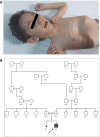
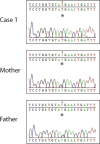
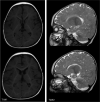
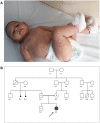
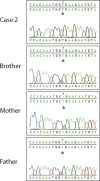
References
-
- Kabzińska D, Mierzewska H, Senderek J, Kochański A. Warburg micro syndrome type 1 associated with peripheral neuropathy and cardiomyopathy. Folia Neuropathol. 2016;54(03):273–281. - PubMed
-
- Handley M T, Morris-Rosendahl D J, Brown S et al.Mutation spectrum in RAB3GAP1, RAB3GAP2, and RAB18 and genotype-phenotype correlations in warburg micro syndrome and Martsolf syndrome. Hum Mutat. 2013;34(05):686–696. - PubMed
-
- Warburg M, Sjö O, Fledelius H C, Pedersen S A. Autosomal recessive microcephaly, microcornea, congenital cataract, mental retardation, optic atrophy, and hypogenitalism. Micro syndrome. Am J Dis Child. 1993;147(12):1309–1312. - PubMed
Publication types
LinkOut - more resources
Full Text Sources

